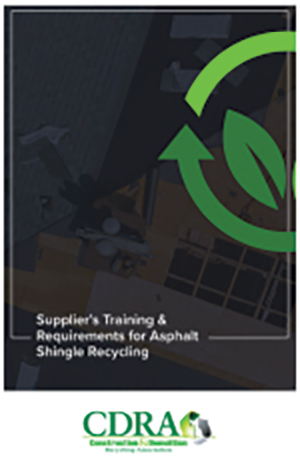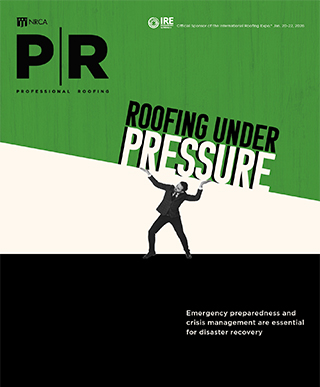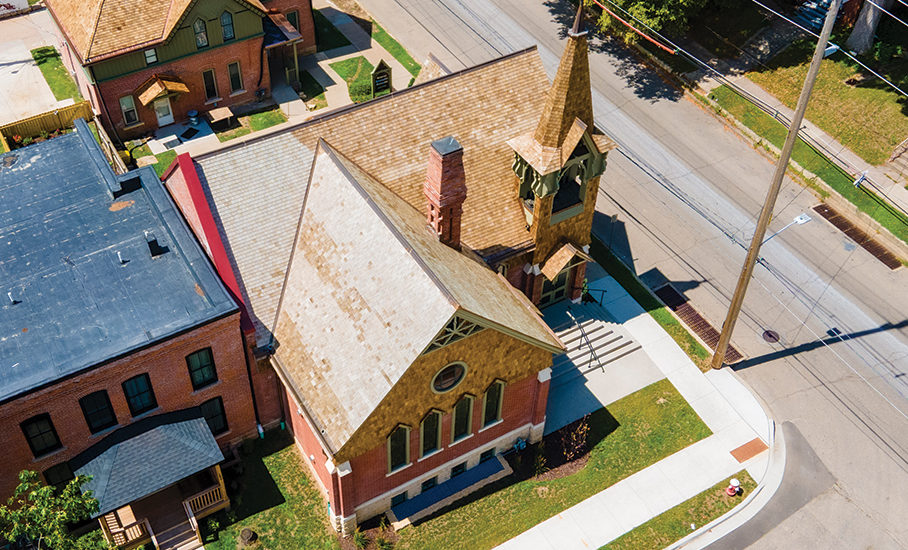
The roofing industry continues to show strong interest in sustainability, and one way roofing contractors are demonstrating their efforts is through voluntary environmental reporting.
Voluntary environmental reporting provides a way to grade efforts, establish baselines and track improvements over time in different aspects of a company’s sustainability efforts, and building owners, potential clients, general contractors and the like are interested in seeing progress.
Highlighting the things that are being done well and being honest in the areas that still need work provides the transparency that helps build trust, and sharing a vision for future goals is an opportunity to write a company’s sustainability narrative.
Some stakeholders may require formal reporting about sustainability or environmental social and governance, and some means of reporting are more cumbersome than others.
Carbon Disclosure Project is an international nonprofit that helps groups disclose their environmental effect. Carbon Disclosure Project reporting yields a score from D- to A and comes with time-restricted mandates as a result. Although Carbon Disclosure Project is recognized internationally, it requires a lot of resources to compile all the necessary data.
EcoVadis is another third-party platform that provides a score between 1 and 100 but with a wider scope, including human rights and ethics. Although this process may be easier to complete, it is not always as applicable for roofing contractors.
When deciding whether to voluntarily pursue one of these options or jobs that require them, it is important to consider the immediate, long-term consequences and weigh them against expected and potential future benefits. Larger companies and companies working with larger clients are more likely to have requirements regarding environmental reporting.
The Sustainability Accounting Standards Board provides a framework for reporting. Its environmental social and governance reporting can be broken into the following categories; the italicized terms are ones the Sustainability Accounting Standards Board considers most relevant for the construction industry:
- Environmental
- Greenhouse gas emissions
- Waste management
- Air quality
- Energy management
- Water management
- Biodiversity impacts
- Social
- Workforce health and safety
- Employee development
- Diversity and inclusion
- Community impact
- Governance
- Product innovation
- Pricing integrity and transparency
- Corporate governance and risk management
- Supply chain management
Among these, waste management is an area where contractors can affect visible change daily and easily measure improvements. Because roofing contractors handle, install and dispose of tons of material and product packaging in the construction process, it is often their responsibility regarding what happens at the end of product’s life. Properly documenting waste disposal also may be required by state or local jurisdictions.
ASTM E3073-22, “Standard Guide for Development of Waste Management Plan for Construction, Deconstruction, or Demolition Projects,” facilitates the development of a construction waste management plan and includes methods and required documentation in preconstruction and construction phases of building construction, renovation, deconstruction and demolition projects. ASTM E3073 or other standards may be a specification requirement provided by the designer or required by a local jurisdiction.
DID YOU KNOW?
The Construction Demolition and Recycling Association has developed a guide for asphalt shingle recycling. You can find it at shinglerecycling.org/resources.

One aspect of waste management often required by jurisdictions is waste diversion. Waste diversion refers to the redirecting of waste materials away from landfills via alternative paths such as recycling. Although waste diversion plans vary, Orange County, Calif., mandates either 65% of nonhazardous construction waste by weight needs to be diverted or tracked tonnage of waste needs to meet mandated maximums per square foot.
In new construction, roofing contractors often need to be aware of what is in the general contractor’s documents relative to waste management and recycling and follow it, but in reroofing situations, roofing contractors often are left to figure it out themselves. Depending on the jurisdiction, a roofing contractor may need to provide proof of a demolition or disposal plan and provide a deposit to obtain a roof permit.
Voluntary environmental reporting provides a way to grade efforts, establish baselines and track improvements over time in different aspects of a company’s sustainability efforts
In some cases, policies or specifications may include progressive requirements for waste management before infrastructure has been put in place to make it feasible. In these situations, roofing product manufacturers help show more circular life cycles for their products.
Some manufacturers have takeback and recycling programs for their scrap and post-consumer materials, which they can repurpose or reuse.
Keep in mind, contractors can control how they receive the material they purchase. Whether it comes shrink-wrapped, boxed or on pallets can affect how much waste is left to address afterward.
Sustainability reporting can be an effective way to garner trust and earn business. It also helps drive and prove growth over time with concrete metrics and, in some cases, time-sensitive requirements.

KURT FESTER BECxP, CxA+BE,
Project engineer
NRCA



